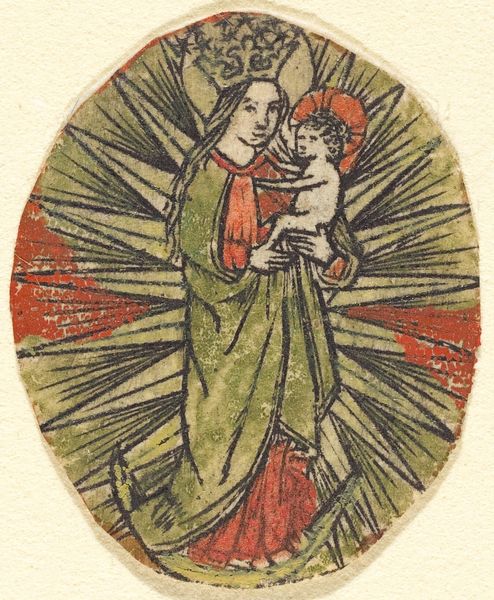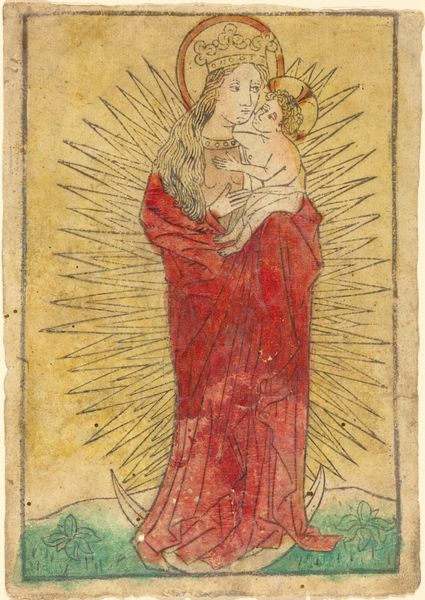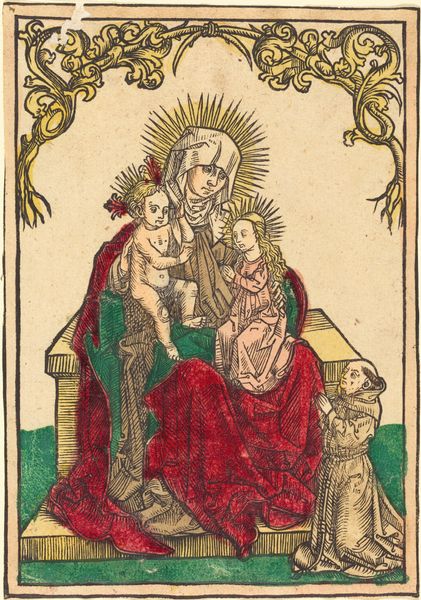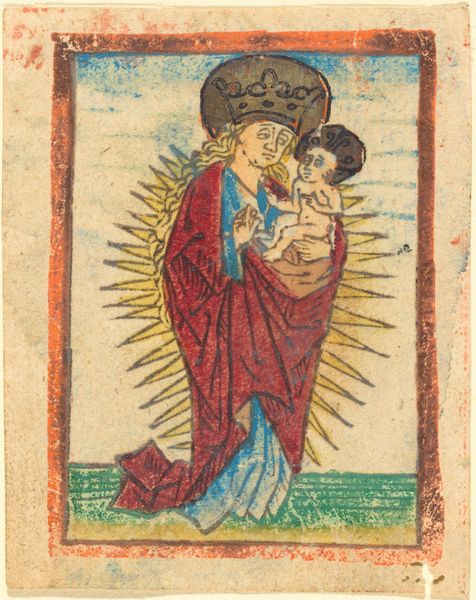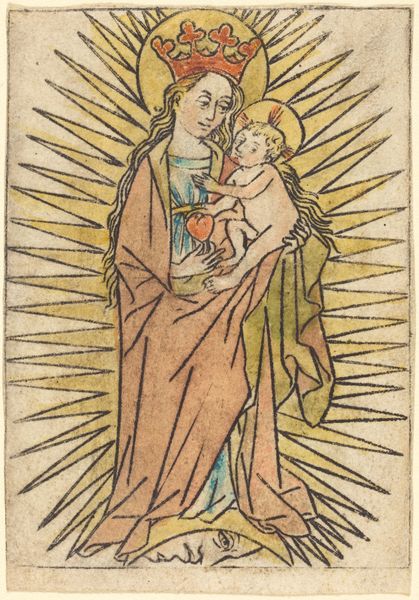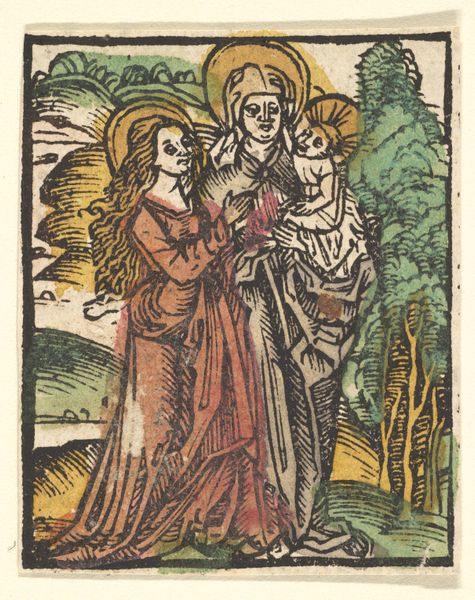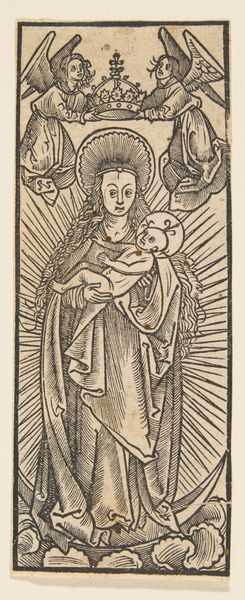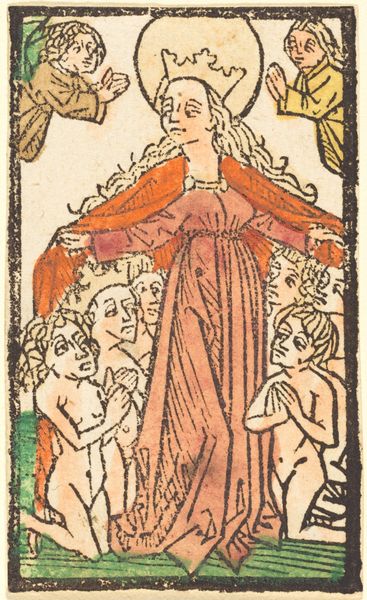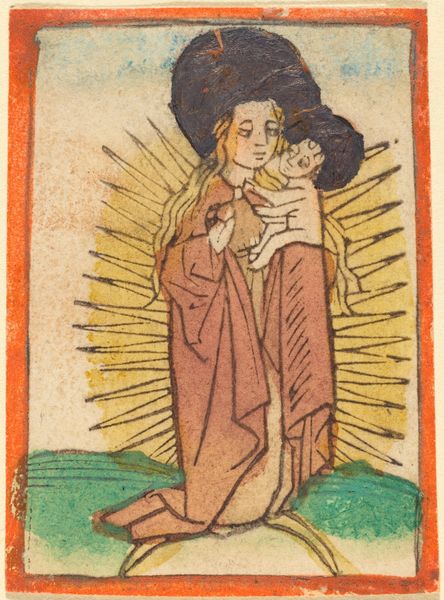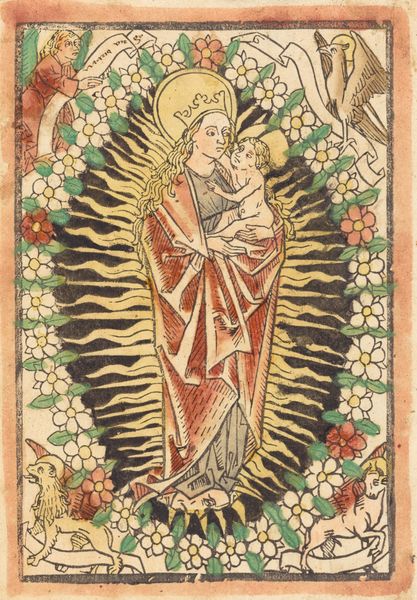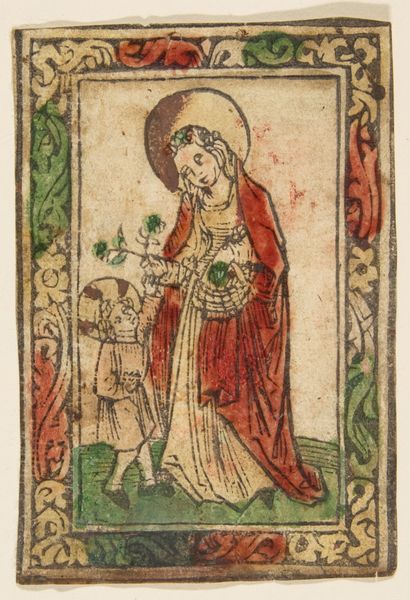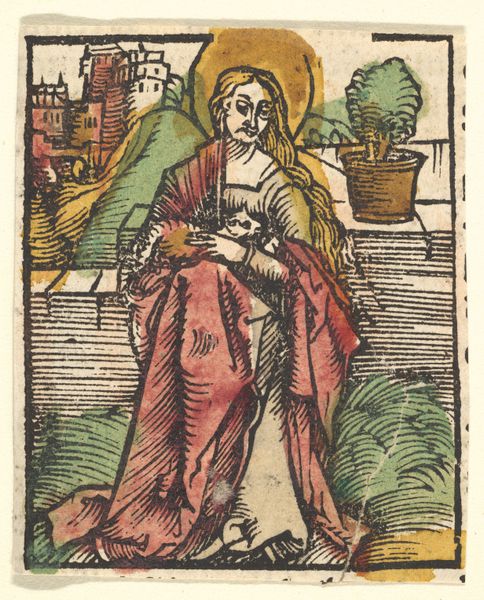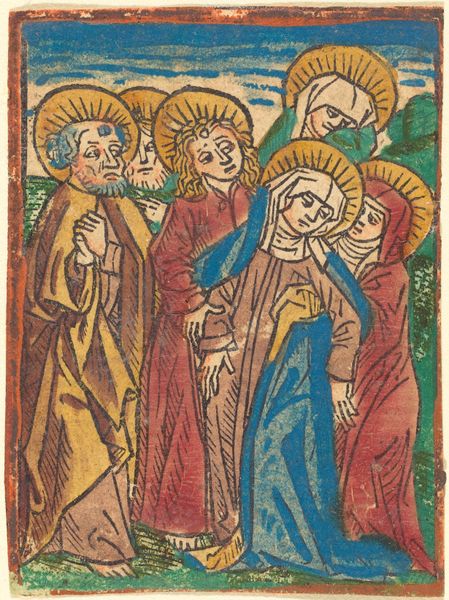
Madonna in Glory Crowned by Angels (Schr. 1113) 15th century
0:00
0:00
drawing, coloured-pencil, print
#
drawing
#
coloured-pencil
# print
#
figuration
#
madonna
#
coloured pencil
#
angel
Dimensions: sheet: 2 1/4 in. (5.7 cm)
Copyright: Public Domain
Editor: Here we have a fifteenth-century print titled "Madonna in Glory Crowned by Angels" by an anonymous artist. It appears to be a drawing with coloured pencils, maybe even a colored woodcut. It feels quite small and intimate, with those vibrant yet simple colours. What can you tell me about it? Curator: Notice the layering of colored pencil over what seems to be a print. The production process interests me most here. Was this a commercially produced item, quickly and cheaply made for mass religious consumption? Or was it something more unique and handcrafted? What can this tell us about the socio-economic status of its likely owner, and the demand for such religious iconography at the time? Editor: That’s a very different way of looking at it than I'm used to! I was thinking about the symbolism. Curator: The symbolism is certainly present, the Madonna surrounded by angels signifies holiness and divinity, yet I wonder if that was always the main concern. What inks were available then, what were the main workshops and did these colours indicate its origin? Let’s focus on the object’s creation: what materials were available? What techniques were used? Was the process efficient or experimental? Understanding the labor and materials is key. Editor: So, instead of just seeing the Madonna and angels, we should be thinking about the colored pencils, the paper, the printing process… the whole industry behind it? Curator: Precisely. Who made the paper, mixed the inks, designed, carved, and colored the work? Art isn’t created in a vacuum. Even religious icons are the result of concrete labour, material availability, and production techniques within specific economic structures. Can studying the materiality teach us more about how society consumed religion then? Editor: I never thought of it that way. I'm walking away from this with such a new appreciation, it is like you peel back the layers of paint, but expose labor instead! Curator: That's a useful skill to apply not only to this piece but across your engagement with all forms of visual culture.
Comments
No comments
Be the first to comment and join the conversation on the ultimate creative platform.
